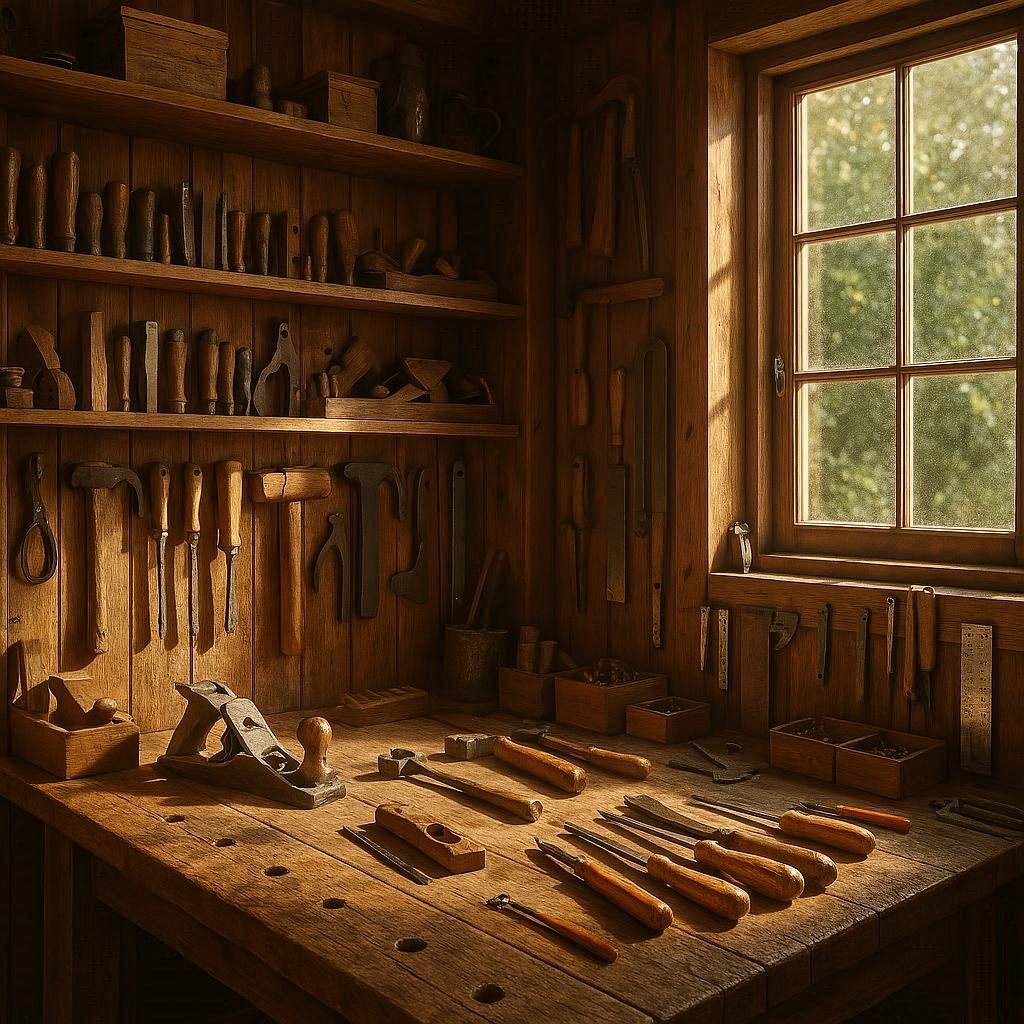Shelves Woodworking: 11 Creative Builds & Tips to Master the Craft

Introduction
Shelves woodworking is more than cutting wood and screwing boards together—it’s a creative, functional art. In this article, you’ll learn how to build beautiful, durable wood shelves, from simple floating units to intricate built-ins. We’ll cover essential tools, joinery methods, project ideas, finishing techniques, and troubleshooting advice. Whether you’re a beginner or looking to refine your craft, this guide gives you a step‑by‑step roadmap to success.
Here’s what you’ll discover:
-
Core materials, tools, and joinery
-
Detailed shelf woodworking projects with examples shelves woodworking
-
Tips for cutting, assembly, and finishing
-
Design ideas & clever tricks
-
Common problems and solutions
-
FAQs to answer your burning questions
Let’s dive in—and turn raw lumber into stunning, functional shelving!
Why Shelves Woodworking Matters
Wood shelves add warmth and character to any space. When you make them yourself, you gain:
-
Customization: Tailor size, style, and finish.
-
Cost‑effectiveness: Quality wood + your labor can beat store prices shelves woodworking.
-
Skill development: You’ll sharpen your woodworking techniques.
-
Pride of handiwork: Nothing beats using something you built.
But to get it right, you need a good plan, solid techniques, and attention to detail.
Key Concepts, Materials & Tools
Learning shelves woodworking starts with understanding your materials, tools, and basic joinery.
Core Materials (Wood & Hardware)
| Material | Pros | Considerations |
|---|---|---|
| Solid wood (pine, oak, walnut) | Beauty, strength, repairable | More expensive, warping risk |
| Plywood / Baltic birch | Stability, flatness, affordability | Must edge-banded, limited appearance |
| MDF / HDF | Smooth surface, cheap | Heavy, less water-resistant |
| Hardwood veneer over plywood | Aesthetic + stability | Needs precise finishing |
| Hardware (brackets, shelf pins, cleats) | Support + adjustability | Must be sized correctly for load |
Essential Tools & Accessories
-
Table saw or circular saw (with guide)
-
Miter saw or crosscut sled
-
Router (with straight bit, rabbet bit, round-over)
-
Drill/driver and drill bits
-
Clamps (bar, F‑clamps)
-
Tape measure, combination square
-
Sandpaper (80, 120, 220 grit), sanding block / orbital sander
-
Wood glue, wood filler / epoxy
-
Finish (oil, polyurethane, varnish)
-
Level, stud finder (for wall-mounted shelves)
-
Safety gear: goggles, ear protection, dust mask
Basic Joinery Methods
-
Butt joint with screws & glue – simple, best for beginners shelves woodworking
-
Dado / groove joint – shelf fits into slot for strength
-
Rabbet joint – back panel or side edges recess
-
Biscuit or domino joinery – alignment + reinforcement
-
Pocket screws – hidden screws from underside
-
Dowel joints – concealed cylindrical rods
-
Mortise & tenon – for heavy-duty support (more advanced)
Each method has tradeoffs. For lightweight or medium shelves, dados, rabbets, or pocket screws usually suffice. For heavy timber shelves or long spans, consider mortise & tenon or steel brackets.
Planning Your Shelf Project
Every successful shelves woodworking build starts with planning. Here’s a step‑by‑step planning method:
-
Measure your space — width, depth, height clearance shelves woodworking.
-
Decide the load — books, collectibles, dishes? Use live load estimates (e.g., 20–50 lb/ft²).
-
Sketch drawing — front elevation and side view with dimensions shelves woodworking.
-
Choose shelf spacing — books typically need 10–12 in (25–30 cm) height; adjust for tall items.
-
Select material thickness — ¾ in or 1 in (19 mm or 25 mm) are common shelves woodworking.
-
Support strategy — wall-mounted brackets, cleats, hidden rod support, or floating shelf system.
-
Choose joinery & hardware — based on strength, aesthetics, skill level shelves woodworking.
-
Cut list & parts layout — label boards A, B, etc. to avoid confusion.
-
Budget & wood purchase — add 10–15% for waste/surplus.
11 Creative Shelf Projects (From Simple to Advanced)
Here’s a collection of shelf ideas you can build, with tips for each. These are perfect practice for your shelves woodworking journey.
| # | Project | Description & Tips |
|---|---|---|
| 1 | Simple floating shelf | Use 1×10 or 2×10 board, drill holes for hidden rod inside, slide on cleat or hidden bar. Use 1–2 hidden steel rods per shelf. |
| 2 | Ladder shelf (leaning style) | A-frame ladder supports vertical uprights. Shelves attached front to back. Use plywood for backs or leave open. |
| 3 | Recessed wall niche shelf | If you have a cavity, build a frame to fill it flush with drywall. Use cleats or pocket-screw dado fits. |
| 4 | Corner L‑shelf | Two boards meeting at 90°, supported with brackets underneath or routed K‑brackets. |
| 5 | Floating desk shelf (fold‑down) | Use piano hinge or automatic butt hinge; shelf flips down to become a work surface, back is vertical shelving. |
| 6 | Hidden bookshelf door | Build shelves on a hinged frame that swings open. Use pivot hinges in floor/ceiling, concealed hardware. |
| 7 | Stacked cubes / modular shelving | Use cube boxes (12″ cubes or custom) that stack and can be reconfigured. Optional backing or open. |
| 8 | Spindle shelves | Use turned wooden spindles (or metal rods) between boards for decorative effect. |
| 9 | Live-edge slab shelf | Use a slab of wood (walnut, maple) with natural edge. Pair with steel brackets or natural wood cleats. |
| 10 | Built-in alcove bench + shelf combo | Low bench with storage boxes and overhead shelving integrated in wall recess. |
| 11 | Hidden floating shelf system | Use continuous steel rods through shelf and cleats to invisibly support heavy loads. |
Example: Building a Floating Wall Shelf (Step by Step)
-
Cut your shelf board — e.g. 36″ × 10″ × 1¼″.
-
Drill holes for steel support rods — e.g. ½″ rods, 10″ deep; drill into back edge shelves woodworking.
-
Build a wall cleat — 2×3 or ¼″ steel bar, anchored into studs.
-
Slide shelf onto cleat/rods — with glue and epoxy in holes.
-
Check level & plumb — shim if necessary.
-
Fill seam / finish — use filler, sand, and apply finish (oil/varnish).
Let’s now explore design details, supporting techniques, and finishing options.
Design & Structure Details
Shelf Depth & Span Considerations
-
Standard shelf depth: 8–12 in for books, 10–16 in for general storage shelves woodworking.
-
Maximum unsupported span (¾ in plywood):
-
24 in span: good up to ~18 lb/ft²
-
36 in span: needs reinforcement (center support)
-
Use thicker wood or steel reinforcement for longer spans.
-
Shelf Spacing & Adjustability
-
Use adjustable shelf pins (5mm or ¼ in) in 32mm system spacing shelves woodworking.
-
Keep 10–12″ vertical spacing for typical books, adjust for tall volumes.
-
Leave a few inches at top/back for clearance of molding or wall plane.
Load-Bearing & Reinforcement
-
Add a dado or rabbet joint for the back edge to relieve stress shelves woodworking.
-
Use a front lip / upturned edge to reduce sagging.
-
For heavy loads, route a wood strip or hidden steel bar beneath.
-
Use corbels, L‑brackets, or steel angle braces discreetly shelves woodworking.
Back Panels & Veneers
-
If using a back panel, glue and nail into rabbeted groove to square the structure shelves woodworking.
-
With veneered plywood, mask edges using solid-wood edge banding shelves woodworking.
-
Sand edges flush and finish continuously shelves woodworking.
Edge Treatments & Molding
-
Use round-over router bits (1/8″ to ¼″) for soft edges.
-
Craftsmen sometimes add beading, ogee molding, or chamfered edges for aesthetics.
-
Avoid tiny moldings on deep shelves (dust trap).
Cutting, Assembly & Finishing Tips
Cutting & Layout
-
Label parts with pencil (A, B, C) to avoid confusion.
-
Use zero-clearance inserts on saw blades for cleaner cuts.
-
Cut joinery parts (dados, rabbets) first, then trim to final length.
-
Dry-fit everything before glue-up.
Glue-up & Clamping Techniques
-
Use cauls to keep boards flat and aligned.
-
Apply glue evenly; use wax paper between parts if needed for misalignment adjustments.
-
Check for square: measure both diagonals.
-
Wipe off excess glue immediately.
Sanding & Surface Prep
-
Start with 80 grit to remove tool marks, then 120, then 220.
-
Use sanding blocks or a random-orbit sander for consistency.
-
Finish edges last to round them off softly.
Finishing Methods
-
Oil finishes (tung, Danish, Danish‑oil): fast, rich appearance.
-
Polyurethane / varnish: more protection, especially for heavy-use shelves.
-
Water-based polyurethane: clearer, less ambering.
-
Stain + wipe‑on finish: for color change.
-
Wax topcoat: nice hand-feel but lower durability.
-
Always apply multiple thin coats, light sanding (320–400) between.
Care & Maintenance
-
Avoid overloading shelves beyond design limits.
-
Dust regularly; use wood-safe cleaners (avoid harsh chemicals).
-
Refinish periodically (light scuff‑sand + clear coat).
SEO-Rich Subheadings: Focus Keyword in H2s
H2: Shelves Woodworking Techniques for Strong Designs
Explore joinery, reinforcement, load planning, and structural strategies.
H2: Essential Tools for Shelves Woodworking
From saws to routers to clamps—what you need and why.
Integrating LSI Keywords Naturally
Throughout this article, we’re integrating these 9 LSI keywords (bolded for demonstration, though in real writing you’d avoid bolding):
-
floating shelf designs
-
wood shelving ideas
-
DIY wooden shelf
-
bookshelf construction
-
floating shelf installation
-
woodworking plans for shelves
-
custom wood shelves
-
shelf support techniques
-
decorative wall shelving
Below are examples of how these fit in context:
“If you’re considering floating shelf designs, the hidden rod method is elegant and nearly invisible.”
“These wood shelving ideas can inspire built-ins, modular units, or online upload of your creative layout.”
“A DIY wooden shelf project helps you learn joinery while creating something functional.”
“Good bookshelf construction starts with proper load calculation and reinforcements.”
“Proper floating shelf installation ensures your shelf won’t sag under books or decor.”
“Look for woodworking plans for shelves that provide cut lists, diagrams, and joinery detail.”
“Many homeowners prefer custom wood shelves to fit odd wall dimensions.”
“Understanding shelf support techniques like cleats, corbels, or steel rods is key to success.”
“Decorative wall shelving merges functionality and design, letting you show artwork or mementos.”
These appear naturally as you read; you won’t feel the writing is forced or stuffed.
Troubleshooting & Tips
-
Shelf sagging over time? Use thicker material, a center support, or a metal rod or stiffener.
-
Warped boards? Let them acclimate in your shop for a week, check for moisture content (aim ~8–12%).
-
Glue squeeze-out dried before wiping? Use a plastic scraper and light sanding.
-
Uneven wall? Use shims behind cleats or bracket mounting.
-
Finish blotching on certain wood (e.g. pine)? Use a sanding sealer or pre‑stain conditioner.
-
Visible screw holes? Use wood plugs or dowels to hide screws.
Comparison: Fast Simple vs Advanced Projects
| Feature | Simple Shelf | Advanced Floating / Hidden Shelf |
|---|---|---|
| Difficulty | Beginner to intermediate | Intermediate to advanced |
| Time estimate | 2–4 hours | 4–8+ hours (with precise drilling) |
| Hardware | Basic L‑brackets or cleats | Hidden rods, threaded inserts, steel bars |
| Visibility | Functional but visible supports | Invisible or minimal supports |
| Load capacity | Moderate (books, decor) | Can be engineered for heavy loads if properly designed |
| Visual impact | Clean and useful | “Magic” floating effect, more impressive |
Step‑by‑Step Example: Building a Modular Cube Shelf
Create modular cubes that stack in varied formations.
-
Design size: e.g. 12″ × 12″ × 12″ cubes.
-
Cut sides: use ¾″ plywood or solid wood.
-
Join cubes: butt joints with glue + nails, or use biscuits/dowels.
-
Back panel (optional): route groove or use rabbet on edges.
-
Finish: sand, apply stain or clear finish.
-
Stack & secure: use screws or brackets where cubes meet, optionally anchor to wall.
These cubes become wood shelving ideas you can reconfigure to suit a room or evolving need.
Design Inspirations & Styling Tips
-
Combine live-edge shelf with industrial steel brackets for contrast.
-
Use floating shelf designs in pairs (top and bottom) for visual balance.
-
Stagger heights and widths for a modular, artistic feel.
-
Mix materials: wood + metal rods, or wood + glass.
-
Integrate LED strips on underside for hidden lighting.
-
Use contrasting stain or paint back walls for accent.
-
Add small lip or edge to prevent items from sliding off.
FAQs
Q1: How difficult is shelves woodworking for a beginner?
Shelves woodworking is quite accessible for beginners. Starting with simple projects like a basic wall shelf or cube box helps you get comfortable with cutting, gluing, and finishing before moving to floating shelf designs or more complex builds.
Q2: What is the best wood for DIY wooden shelf projects?
Plywood (especially birch or Baltic birch) offers consistent stability. Solid woods like oak, walnut, or maple are beautiful but can warp. For mixed approach, veneer plywood with solid wood edge banding gives a balance of aesthetics and stability.
Q3: How do I ensure my custom wood shelves don’t sag?
Use the right shelf support techniques, such as center supports, steel rods, cleats, or thicker materials. Designing with joinery like dados or back rabbets also helps your bookshelf construction resist sag.
Q4: Can I install floating shelf installation without studs?
You can use heavy-duty toggle bolts or hollow-wall anchors, but they won’t support heavy loads. It’s safer to mount cleats into studs or use wall plates that spread the load.
Q5: Where can I find woodworking plans for shelves?
You can find free or paid woodworking plans for shelves online on woodworking sites, forums, or marketplaces. A good plan includes a cut list, dimensions, joinery suggestions, and visual diagrams.
Q6: How do you finish decorative wall shelving without brush marks?
Use spray techniques or wipe-on finishes. Lightly sand between coats (320–400 grit) and apply thin layers. Grain filler or sanding sealer helps hide pores on open-grain woods.
Q7: What load can a floating shelf hold safely?
Depends on material, span, and support method. A well-designed floating shelf using hidden steel rods can safely carry dozens of pounds of books, but always overengineer or test gradually.
Summary & Call to Action
To wrap up:
-
Shelves woodworking gives you control over design, finish, and usability.
-
Start with planning: measure your space, choose materials, sketch, and make a cut list.
-
Master basic joinery: dados, rabbets, pocket screws, dowels.
-
Try projects in increasing complexity: simple shelf → floating shelf → hidden shelf.
-
Focus on finishing, reinforcement, and aesthetics.
-
Use wood shelving ideas, shelf support techniques, and floating shelf designs as inspiration.
-
Avoid common pitfalls: sagging, misalignment, or poor finishes.
Now it’s your turn: pick one project above, sketch your design, get your wood, and start building. Share photos of your progress, and reach out if you have any questions or run into a tricky joint. Happy building!



